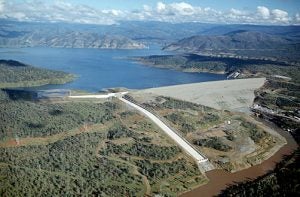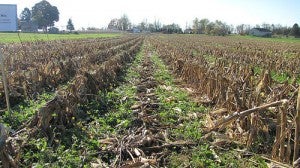
Oroville Dam is located in the Sierra Nevada foothills about 80 miles north of Sacramento. At 770 feet, it’s the tallest dam in the U.S.
The crisis at Oroville Dam in Northern California has abated, but problems could return with more rain in the forecast for later this week.
If you haven’t heard, the reservoir behind the dam reached capacity last weekend, sending water over an emergency spillway for the first time since its construction in 1968. Authorities ordered more than 180,000 people downstream to evacuate their homes over concerns that the spillway could fail, sending an enormous uncontrolled rush of water down the Feather and Sacramento Rivers.
While the evacuation order has since been lifted, our thoughts still go out to those affected. We continue to monitor and try to make sense of the situation, and while many lessons will eventually be pulled from this experience, there is much to reflect on today.











